-
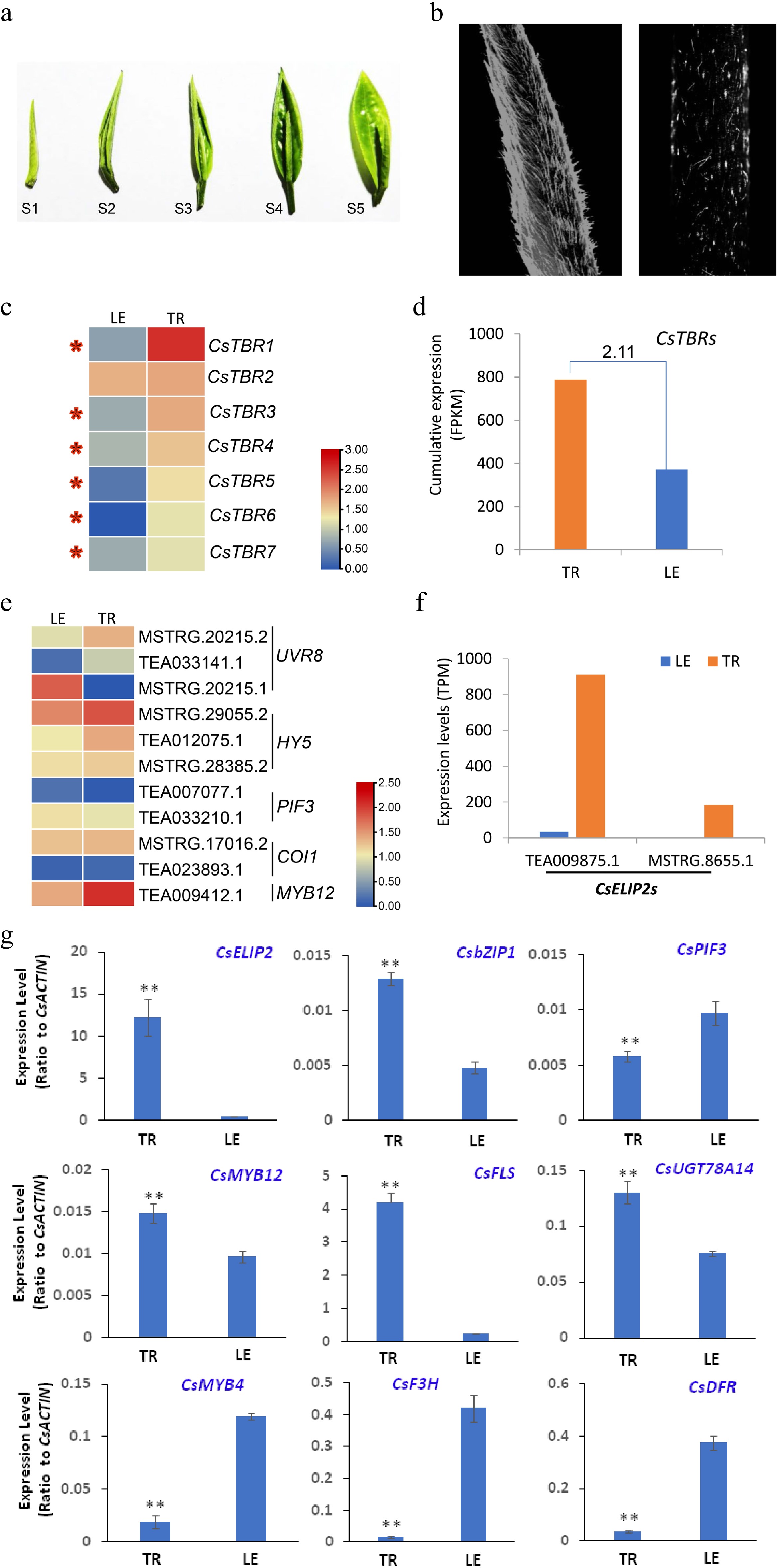
Figure 1.
Tea leaf trichomes play crucial roles in the photoprotection process. (a) Morphology of developing tea leaves. (b) Tea leaf (left) and stem (right) trichomes displaying strong birefringence under high light. (c) The expression pattern of trichome birefringence (TBR) in trichomes (TR) and LE (leaf with trichomes removed). The expression levels (log10) of representative genes were displayed using a heat map. (d) Cumulative expression analysis of the TBR gene family in TR and LE. The fold change (TR/LE) of gene family expression level is also listed on the bar. (e) The expression pattern of genes related to high light or UVB response in TR and LE. The expression levels (log10) of representative genes were displayed using a heat map. (f) The expression levels of two CsELIP2 transcripts in TR and LE. (g) qRT-PCR validation of expression patterns of genes in defense response and secondary metabolism. Data were from three experiments (n = 3) and expressed as means ± s.d. and the significant differences between comparisons were analyzed by using Student’s t-test in a two-tailed comparison (* P < 0.05 and ** P < 0.01). Gene expression data were retrieved from transcriptome data and expressed as FPKM or TPM. Heatmaps for gene expression were determined with these transcriptome data sets. qRT-PCR were conducted to verify the expression patterns of key genes involved in light signaling and defense response, as well as flavonoid biosynthesis.
-
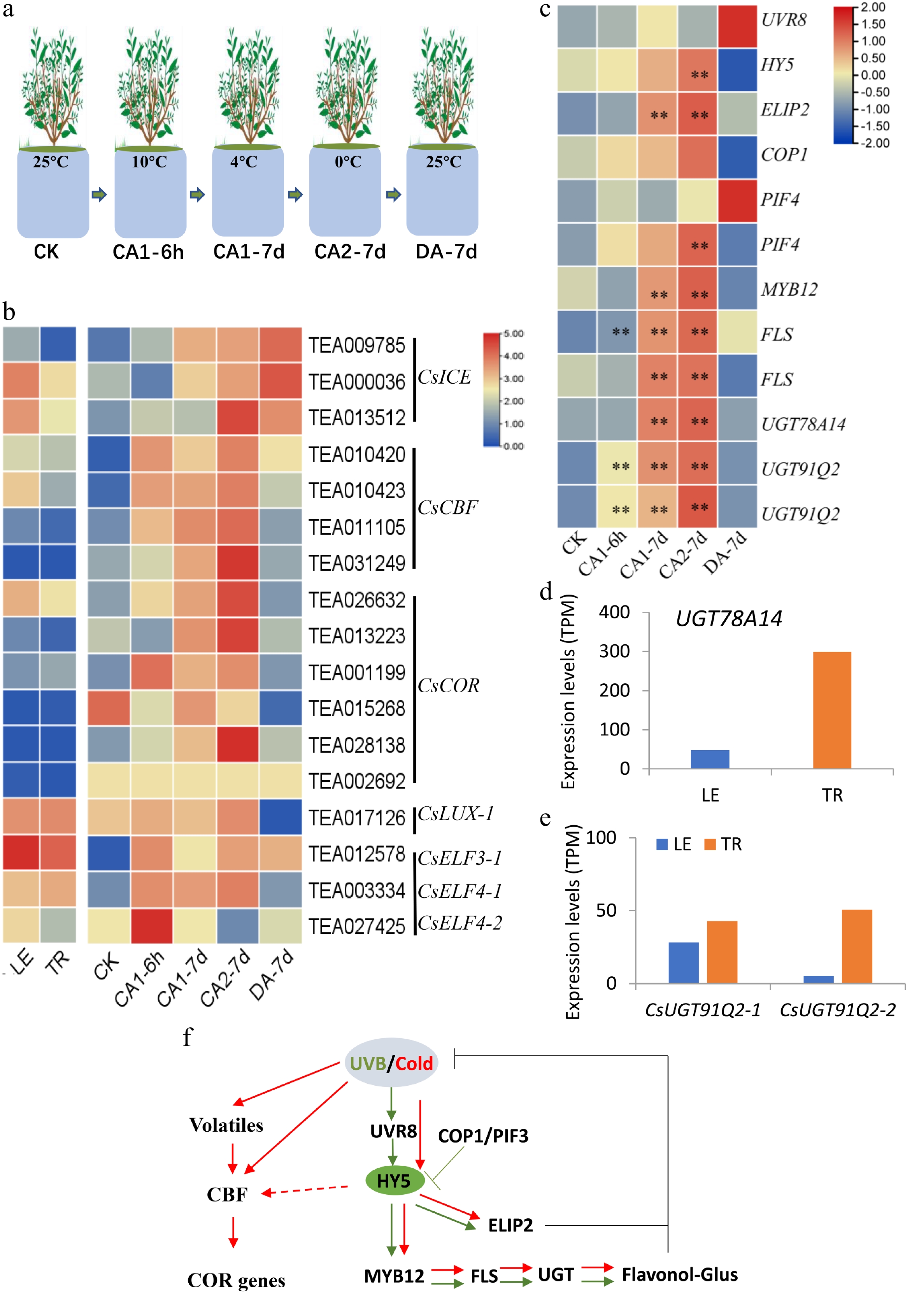
Figure 2.
Tea leaf trichomes play crucial roles in cold stress. (a) Images for tea plants under cold stress treatment. (b) CBF genes were activated by cold stress in tea plants. (c) The expression of light- or cold- response, and circadian genes up-regulated by cold stress. The expression levels (log10) of representative genes were redisplayed using a heat map. The expression levels of (d) UGT78A14, and (e) two CsUGT91Q2 genes in the TR and LE. (f) Proposed working model of the conservative light and cold signal transduction pathway in tea plants
-
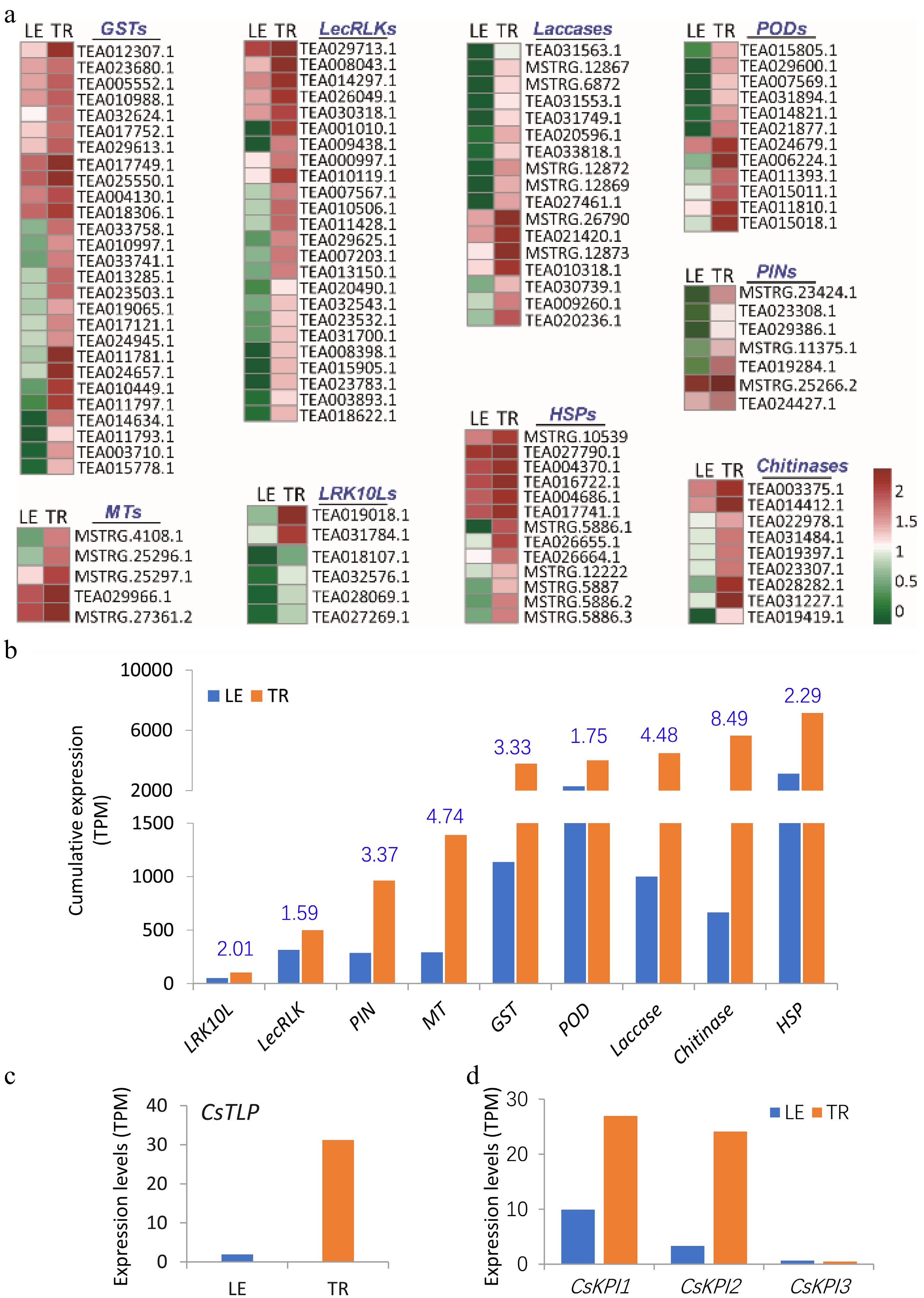
Figure 3.
Enhanced expression of defense-related genes in tea plant trichomes. (a) Several major gene families involved in anti-insect, anti-microbial, and general defense displayed higher expression levels in trichomes (TR) than in trichome-removed leaves (LE). The expression levels (log10) of representative genes were represented using a heat map. (b) Cumulative expression of some gene families in TR and LE. The fold changes (TR/LE) in gene expression are shown in blue on the bar chart. The expression level of (c) Thaumatin-like protein (TLP), and (d) three Kunitz protease inhibitor genes (KPI) in the TR and LE. GST, glutathione-S-transferase; LRK10L, leaf rust 10 disease-resistance locus receptor-like protein kinase; POD, peroxidase; HSP, heat shock protein; MT, metallothionein protein; LecRLK, G-type lectin S-receptor-like serine/threonine-protein kinase; PIN, protease inhibitor protein.
-
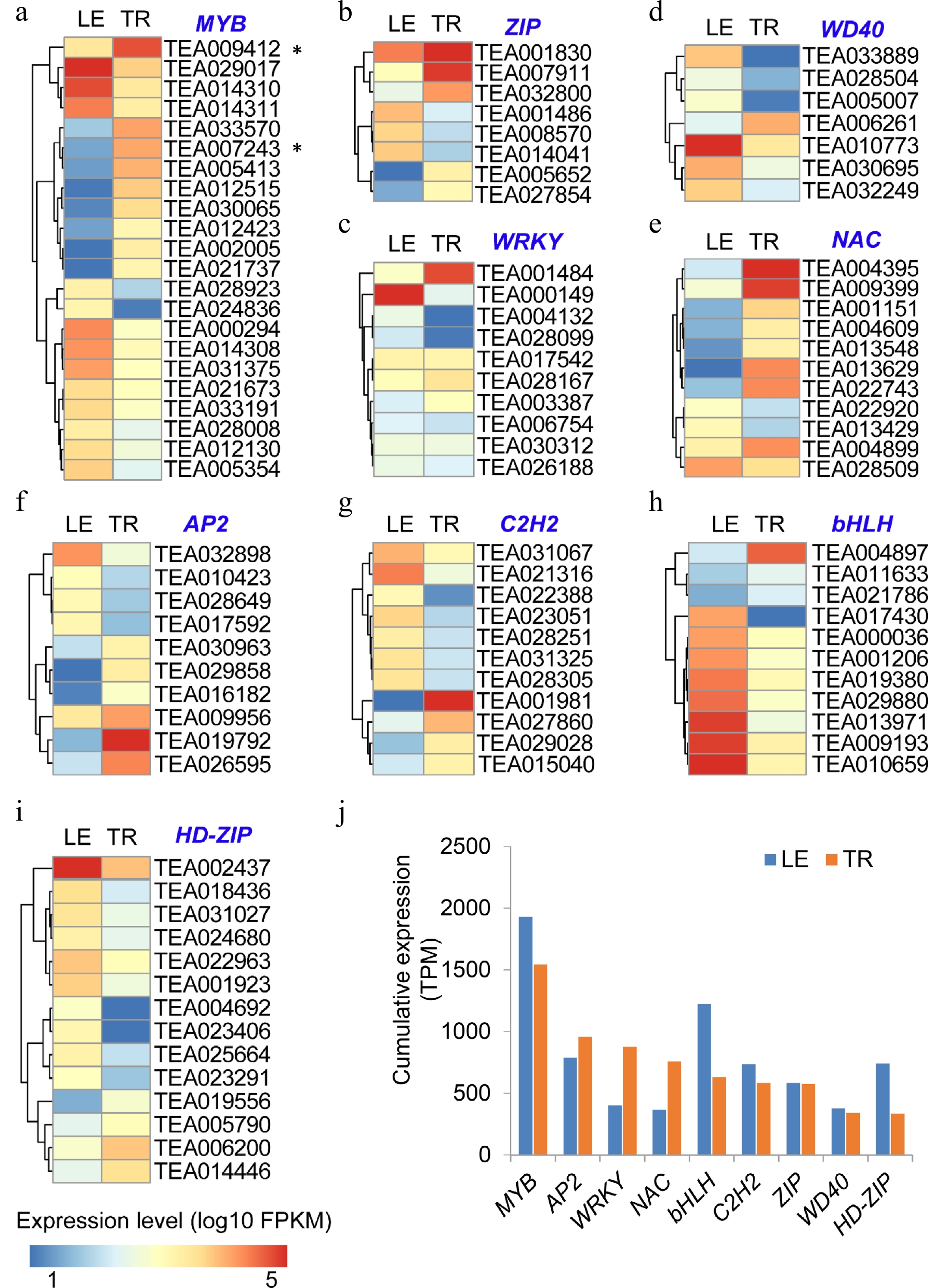
Figure 4.
Abundant expression of transcription factors in tea trichomes (TR) and trichome-removed leaves (LE). (a)-(i) The expression of representative TF genes in comparison with TR and LE, including MYB, ZIP, WRKY, WD40, NAC, AP2, C2H2, bHLH, and HD-ZIP. The relative expression levels (log10) of representative TFs are represented using a heat map. (j) Cumulative expression of each of TF families in TR and LE.
-
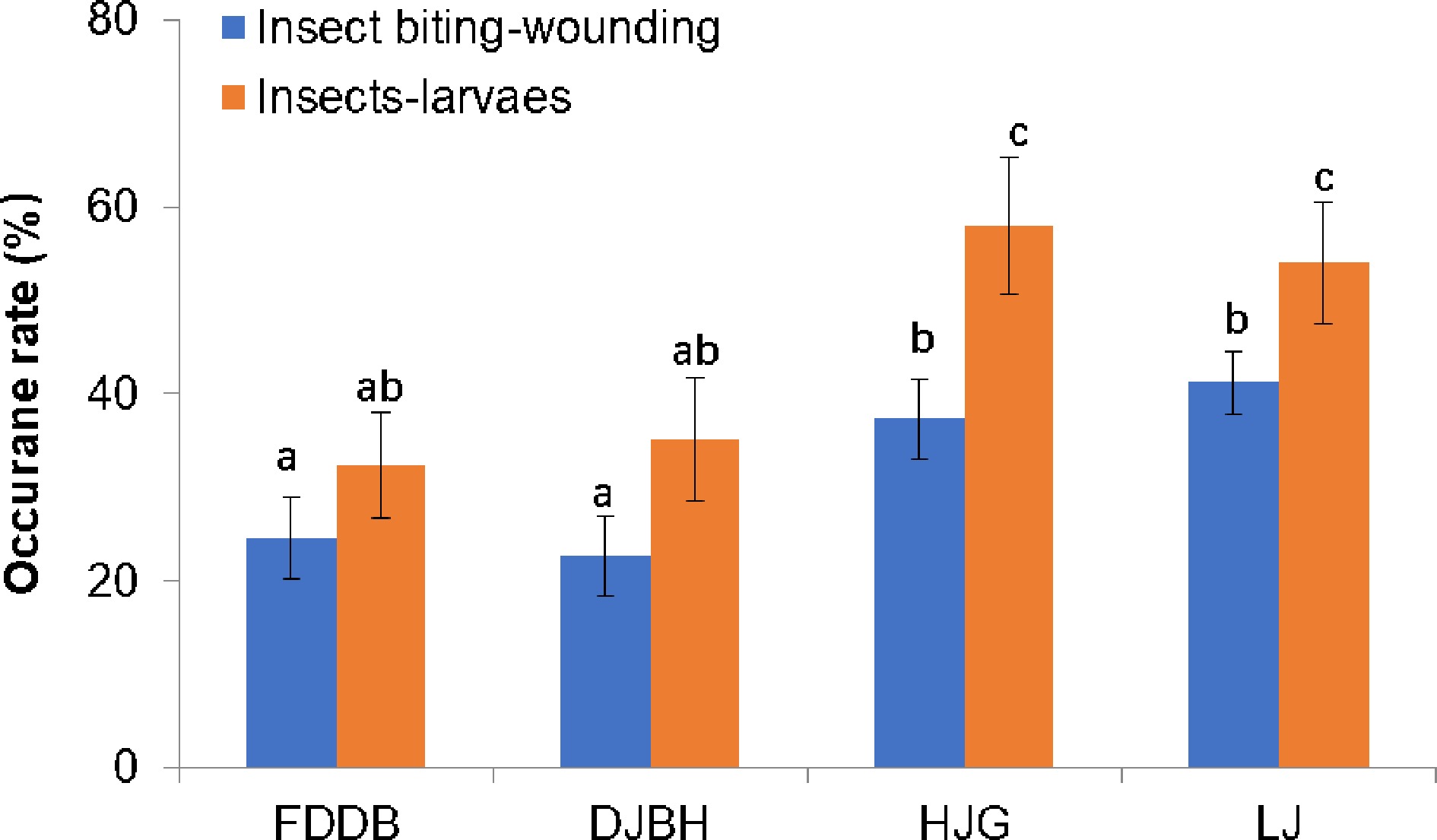
Figure 5.
Impacts of tea trichomes on resistance against insect attacks.. Effects of the presence of long and densely spaced trichomes on resistance against insects and larvae of Toxoptera aurantii Boyer and Empoasca pirisuga Matumura were observed in tea gardens. The insect resistance phenotypes of these tea plant varieties were examined during May to August, in the tea gardens in Luan and Dongzhi areas in Anhui province (Anhui, China). Two years of observation data were obtained from at least three different tea gardens. More than 30 plants were examined in each experiment. Data are expressed as means ± s.d. ANOVA were used to examine the significance of differences.
-
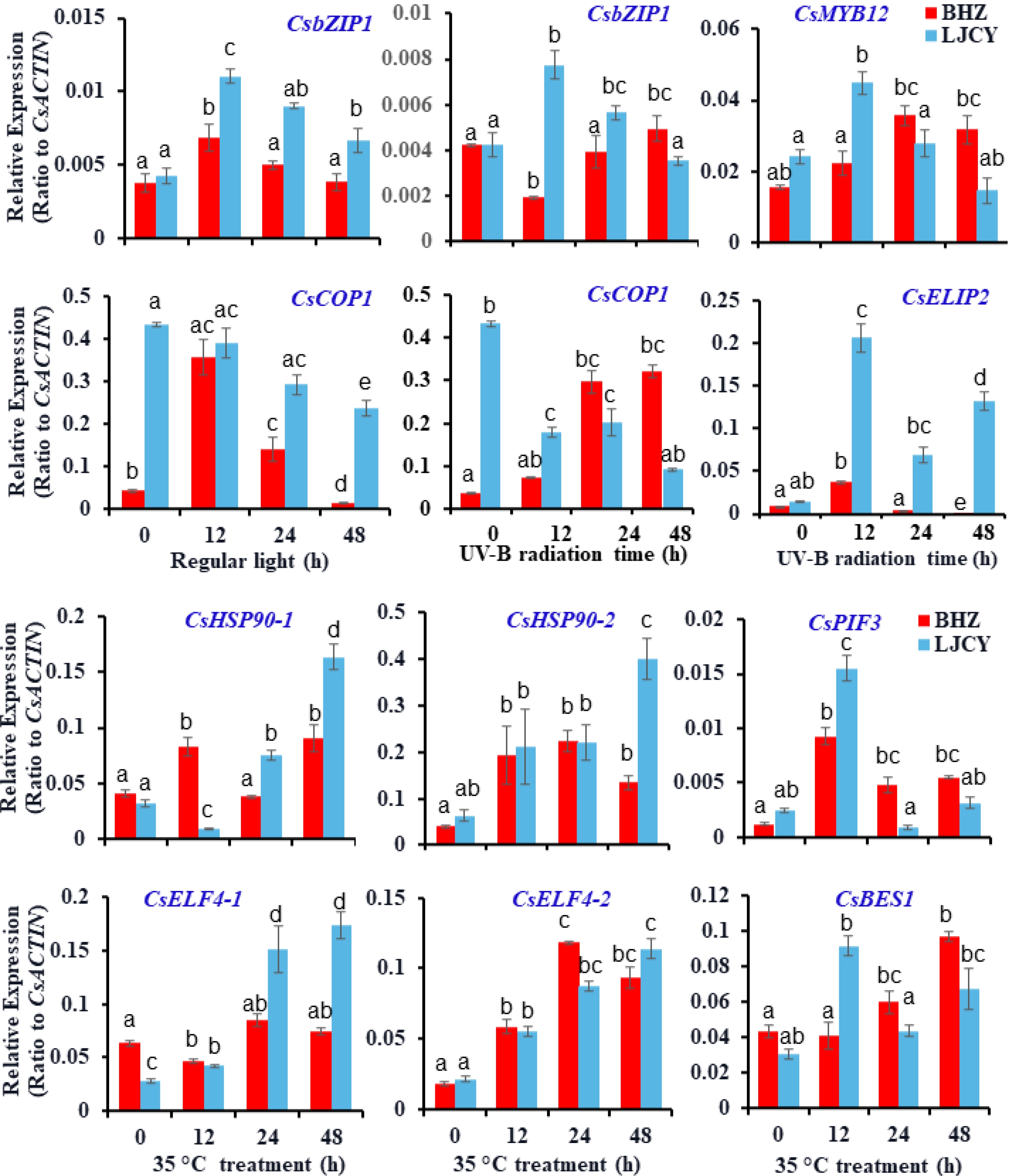
Figure 6.
Effects of trichome density on tea plant resistance against UV-B radiation and high temperature stress. Two tea plant varieties, with distinct trichome indexes were chosen for examination of the protection roles of trichomes on tea plant shoot tips. Two tea plant seedlings were treated with UV-B radiation or high temperature (35 °C) for a variety of times (regular white light in growth chambers or normal temperature (22 °C) as controls). Shoot tips were monitored for any phenotypes or sampled for RNA analysis with qRT-PCR examination of stress-related genes. More than nine plants for each genotype of tea plant varieties were treated in each experiment. Data are expressed as means ±s.d. ANOVA were used to examine the significance of differences.
Figures
(6)
Tables
(0)